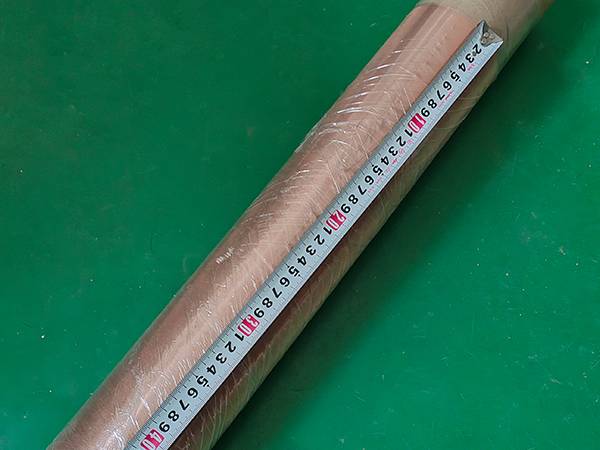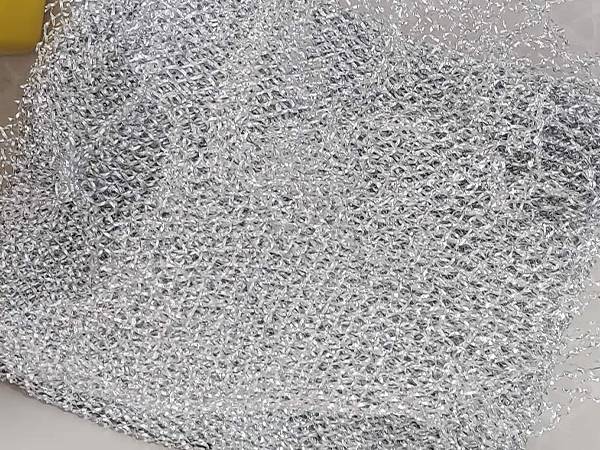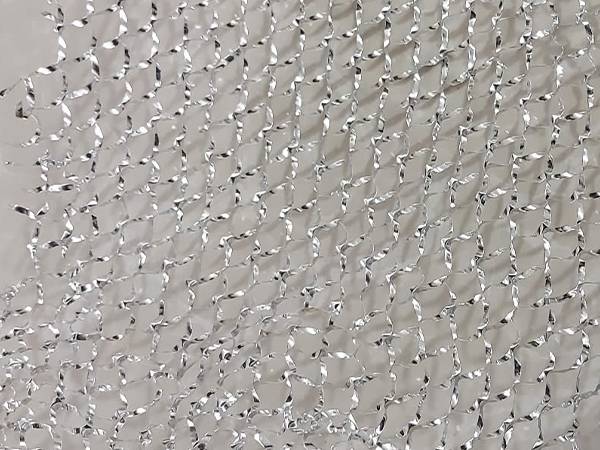Wind Power
When a wind blade is struck by lightning, the unprotected blade experiences an electrical arc from the point of contact through the conductive components to the root of the structure, which can cause component temperatures to reach up to 30,000 °C (approximately 54,000 °F) and potentially cause the blade to explode. To avoid this, micro expanded metal foil mesh can be used to protect these composite structures, ensuring that the functionality of the component is not compromised.
Copper foil mesh and aluminum foil mesh are two common materials used in composite materials for wind turbine blades:
- Copper foil mesh is widely used due to its excellent electrical conductivity and good corrosion resistance performance.
- Aluminum foil mesh is favored for its light weight and high cost-effectiveness.
Micro expanded copper mesh
Aluminum foil mesh top view
Aluminum foil mesh detail
Lightning strike mesh, on the other hand, is made of copper and aluminum foils that are cut and stretched (expanded) to form a single, uniform, precision nonwoven structure. The manufacturing process is tightly controlled to meet weight, conductivity, and open area requirements. This design provides higher conductivity and a smoother surface than woven mesh, which improves component moldability and adhesion to the composite structure.
Lightning strike mesh is manufactured with great precision to ensure consistent weight, conductivity, and open area. This design provides higher conductivity than traditional woven wire mesh and a smoother surface, which improves the moldability of the component and enhances its adhesion to the composite structure.
Reference Specifications of Popular Materials for Lightning Protection
| Item |
LWD
mm |
SWD
mm |
Strand Width
mm |
Open Area
% |
Coverage
% |
Overall Thickness
mm |
Material Width
mm |
Resistance
mΩ/m2 |
Area Weight
g/m2 |
| SWD |
LWD |
| AL66 |
2.540 |
1.235 |
0.32 |
55 |
45 |
0.300 |
927 |
≤ 5.708 |
≤ 1.520 |
66 |
| AL78 |
2.540 |
1.310 |
0.16 |
55 |
45 |
0.224 |
927 |
≤ 4.120 |
≤ 1.232 |
78 |
| AL137 |
2.540 |
1.380 |
0.28 |
60 |
40 |
0.344 |
927 |
≤ 5.770 |
≤ 1.800 |
137 |
| CU73 |
2.540 |
1.250 |
0.11 |
80 |
20 |
0.176 |
930 |
≤ 10.080 |
≤ 2.920 |
73 |
| CU142 |
2.540 |
1.240 |
0.16 |
80 |
20 |
0.079 |
930 |
≤ 5.500 |
≤ 1.470 |
142 |
| CU195 |
2.540 |
1.340 |
0.24 |
65 |
35 |
0.280 |
930 |
≤ 3.600 |
≤ 1.100 |
195 |
| CU815F |
3.000 |
1.500 |
0.35 |
45 |
55 |
0.254 |
610 |
≤ 1.000 |
≤ 0.340 |
815 |
Boedon is constantly developing new technical equipment to provide better products for more applications and industries. You can browse our current applications and industries. If you can't find what you are looking for, please contact us. We are willing to cooperate with our clients to develop the micro expanded metal mesh you need.












